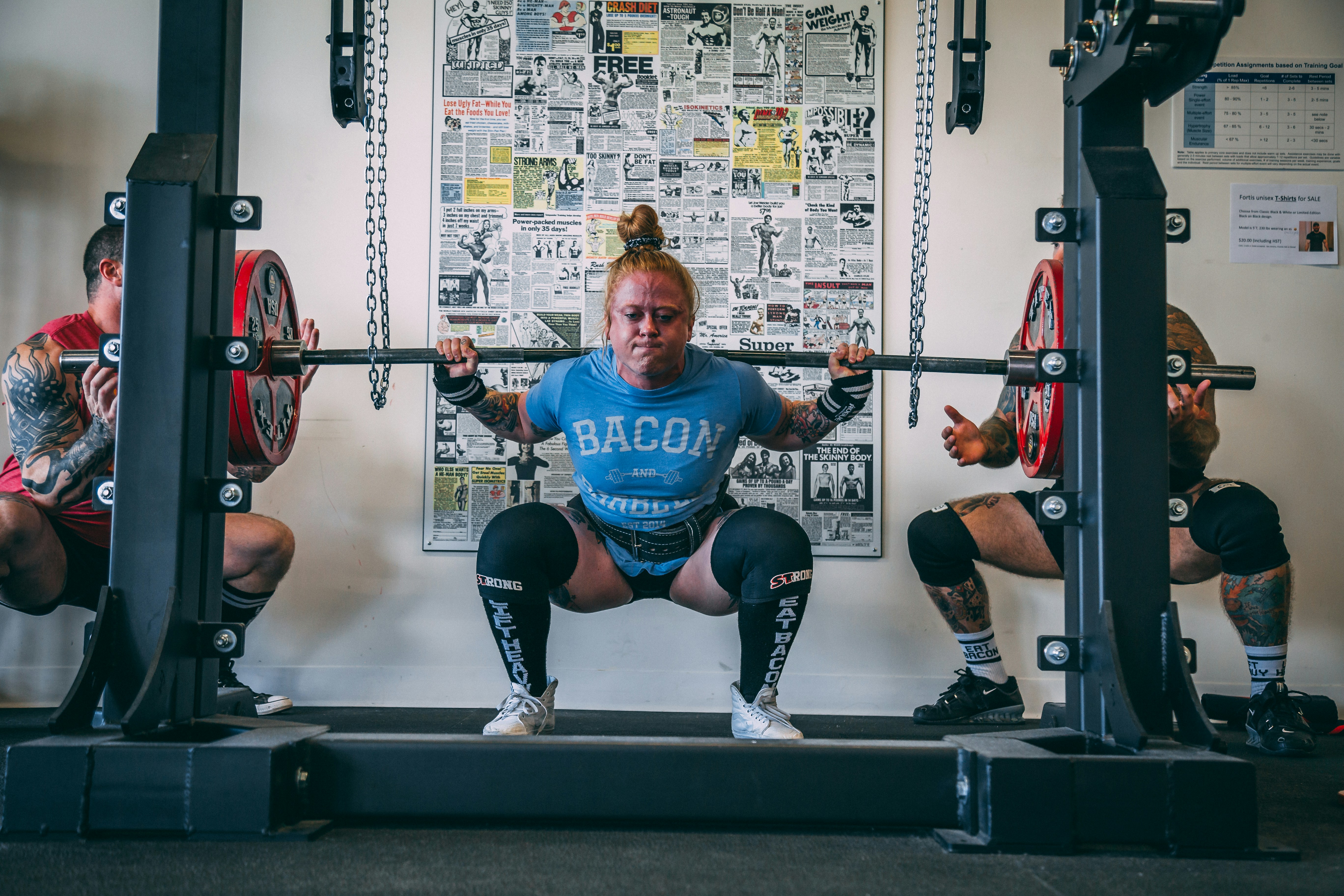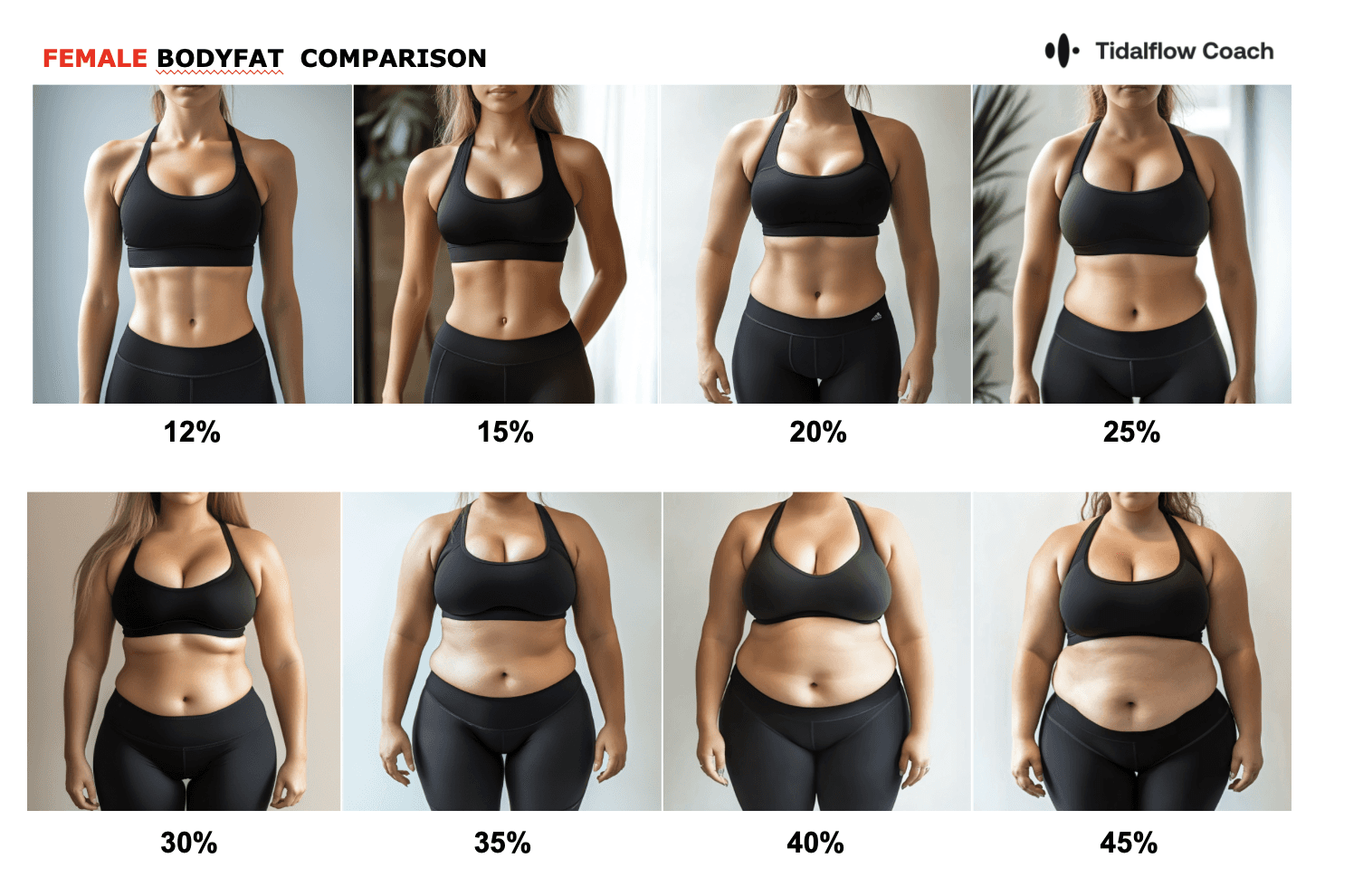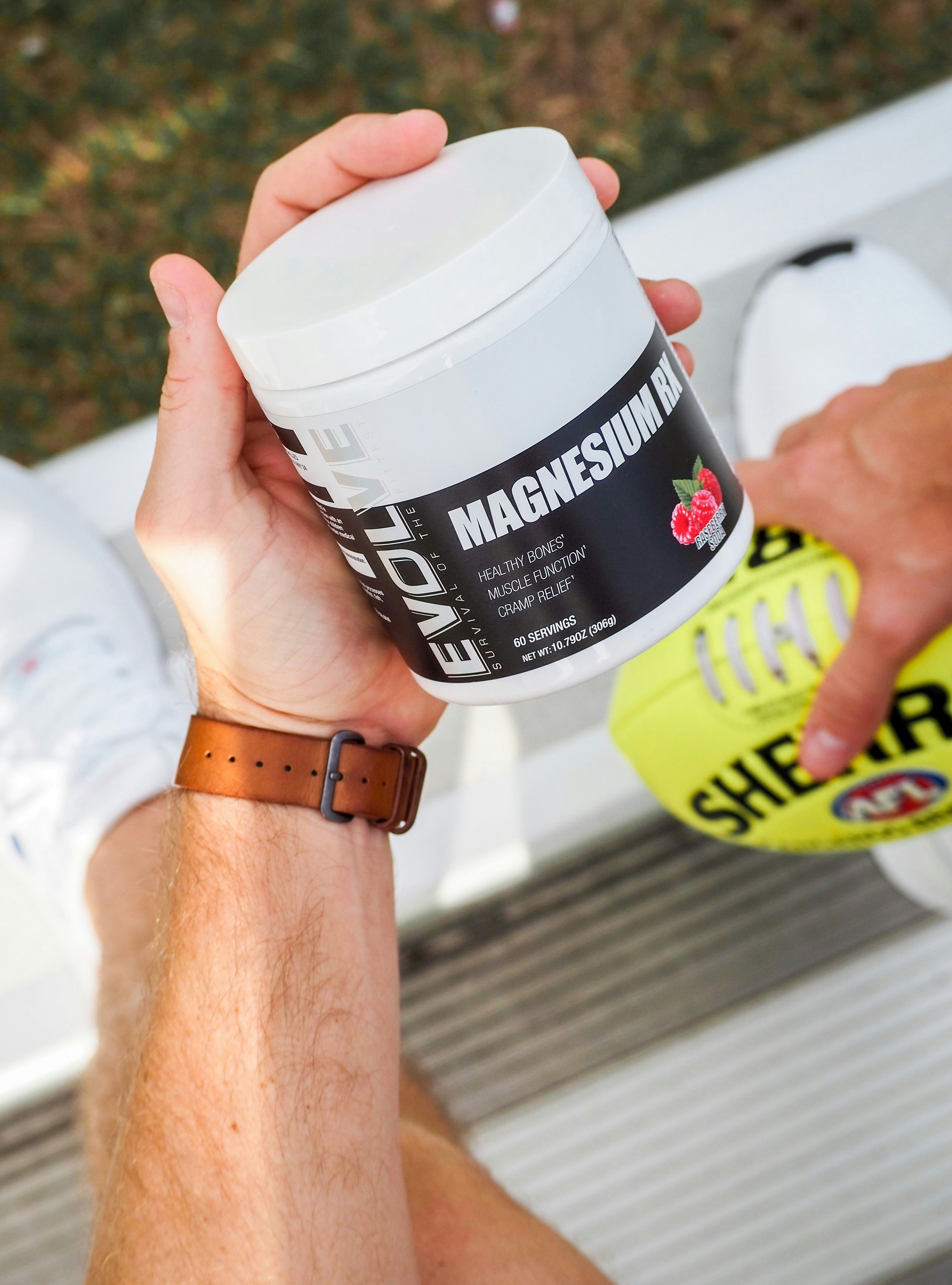Elevated Squats: Maximize Quads & Overcome Mobility Issues
Sep 25, 2024
Are you looking to take your leg workouts to the next level or struggling with traditional squats due to mobility issues? Elevated squats might be the answer you're searching for. In this comprehensive guide, we'll explore the benefits, techniques, and potential drawbacks of elevated squats, helping you decide if they're the right addition to your fitness routine.
What Are Elevated Squats?
Elevated squats, also known as heel-elevated squats or raised heel squats, are a variation of the traditional squat where the heels are placed on an elevated surface. This can be achieved using weight plates, a wedge, or specialized weightlifting shoes with raised heels.
What Do Elevated Squats Do?
Elevated squats offer several benefits that make them a popular choice among lifters and fitness enthusiasts:
Increased Quad Activation: By shifting the angle of your lower leg, elevated squats place more emphasis on the quadriceps muscles.
Improved Squat Depth: The raised heel position allows for greater ankle dorsiflexion, enabling many lifters to achieve a deeper squat.
Better Torso Position: The elevated heel often helps lifters maintain a more upright torso position throughout the movement.
Ankle Mobility Compensation: For those with limited ankle mobility, elevated squats can be a temporary solution to perform squats with proper form.
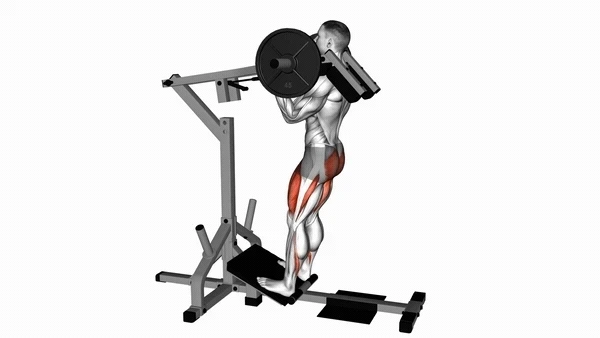
Is Normal Squat Better Than Elevated Squat?
The answer to this question largely depends on your goals and individual biomechanics. Here's a comparison:
Normal Squats:
More balanced muscle engagement between quads and posterior chain
Better for overall functional strength and athletic performance
Requires good ankle and hip mobility
Elevated Squats:
Greater emphasis on quadriceps
Allows for deeper squat depth for many lifters
Can be beneficial for those with limited ankle mobility
While traditional squats are generally considered more functional and balanced, elevated squats can be an excellent tool for targeting the quads or working around mobility issues. Ideally, both variations can have a place in a well-rounded training program.
Why Are Elevated Squats Harder?
Some lifters find elevated squats more challenging for several reasons:
Increased Range of Motion: The raised heel position often allows for a deeper squat, which means more work for your muscles.
Greater Quad Emphasis: Your quadriceps are forced to work harder due to the altered angle of your lower leg.
Less Posterior Chain Involvement: With less engagement from the glutes and hamstrings, your quads have to do more of the work.
Unfamiliarity: If you're used to traditional squats, the new position and balance requirements can feel challenging at first.
Are Elevated Squats Better for the Knees?
The impact of elevated squats on knee health is a topic of debate among fitness professionals. Here are some considerations:
Potential Benefits:
The upright torso position can reduce shear forces on the knees
Deeper squats achieved through elevated heels may improve overall knee health and mobility
Potential Drawbacks:
Increased knee flexion angle may lead to more stress on the knee joint
Over-reliance on elevated squats could mask underlying mobility issues
It's important to note that the effect on your knees can vary based on individual factors such as anatomy, existing injuries, and technique. If you have knee concerns, it's best to consult with a physical therapist or qualified fitness professional before incorporating elevated squats into your routine.
How to Perform Elevated Squats
Follow these steps to perform elevated squats with proper form:
Set Up: Place a weight plate or wedge (about 1-2 inches high) under your heels. Stand with feet shoulder-width apart.
Brace Your Core: Engage your core muscles to maintain a stable spine throughout the movement.
Initiate the Squat: Begin by breaking at the hips and knees simultaneously, sitting back and down as if you're aiming for a chair behind you.
Control the Descent: Lower yourself until your thighs are at least parallel to the ground, or as low as you can maintain good form.
Drive Upwards: Push through your feet, focusing on driving your knees outward as you return to the starting position.
Repeat: Perform the desired number of repetitions while maintaining proper form and control.
Variations of Elevated Squats
Barbell Heel Elevated Squats: Perform the movement with a barbell across your upper back.
Dumbbell Heel Elevated Squats: Hold dumbbells at your sides or in a front rack position.
Goblet Heel Elevated Squats: Hold a kettlebell or dumbbell close to your chest.
Single-Leg Elevated Squats: Perform the movement on one leg for an added balance and stability challenge.
Pause Elevated Squats: Add a pause at the bottom of the movement to increase time under tension.
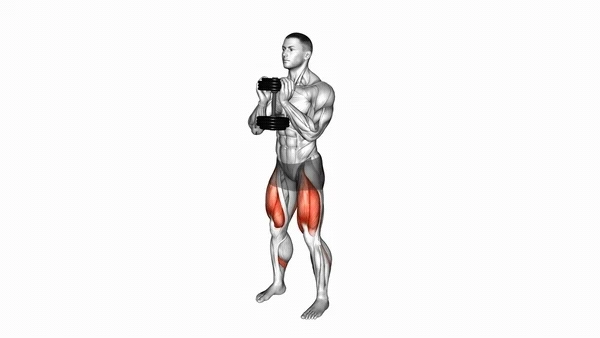
Incorporating Elevated Squats into Your Workout Routine
To effectively use elevated squats in your training program, consider the following tips:
Frequency: Start by incorporating elevated squats 1-2 times per week as part of your leg workouts.
Sets and Reps: Begin with 3-4 sets of 8-12 repetitions, adjusting based on your fitness level and goals.
Progressive Overload: Gradually increase weight, reps, or sets as you become stronger and more comfortable with the movement.
Complementary Exercises: Pair elevated squats with posterior chain exercises like Romanian deadlifts or hip thrusts for balanced leg development.
Mobility Work: Continue to work on ankle and hip mobility to address any underlying issues.
Sample Leg Workout Including Elevated Squats
Here's an example of how you might incorporate elevated squats into a comprehensive leg workout:
Barbell Back Squats (warm-up): 2-3 sets of 8-10 reps
Elevated Barbell Squats: 3-4 sets of 8-12 reps
Romanian Deadlifts: 3 sets of 10-12 reps
Walking Lunges: 3 sets of 10-12 steps per leg
Leg Press: 3 sets of 12-15 reps
Calf Raises: 3 sets of 15-20 reps
Benefits of Elevated Squats
Quad Development: The increased knee flexion and upright torso position place greater emphasis on the quadriceps, potentially leading to increased muscle growth and strength in this area.
Improved Squat Depth: For those with limited ankle mobility, elevated squats can allow for a deeper squat position, which may translate to better overall squat performance over time.
Upright Torso Position: The elevated heel helps maintain a more vertical torso, which can be beneficial for those who struggle to keep their chest up during traditional squats.
Knee-Friendly Option: Some lifters find that elevated squats put less stress on their knees compared to traditional squats, although this can vary from person to person.
Variety in Training: Adding elevated squats to your routine provides a new stimulus for your muscles, potentially breaking through plateaus and preventing boredom.
Potential Drawbacks of Elevated Squats
Masking Mobility Issues: While elevated squats can work around ankle mobility limitations, they don't address the underlying problem.
Reduced Posterior Chain Activation: The altered body position in elevated squats may result in less engagement of the glutes and hamstrings compared to traditional squats.
Balance Challenges: The raised heel position can feel unstable for some lifters, especially when first learning the movement.
Potential for Knee Stress: The increased knee flexion angle in elevated squats may lead to more stress on the knee joint for some individuals.
Addressing Mobility Issues
While elevated squats can be a useful tool, it's important to work on improving mobility alongside their use. Here are some exercises to help improve ankle and hip mobility:
Ankle Mobility Exercises: Perform ankle circles, calf stretches, and banded ankle mobilizations.
Hip Mobility Drills: Include exercises like leg swings, hip circles, and pigeon stretches.
Foam Rolling: Use a foam roller on your calves, quads, and hip flexors to improve tissue quality.
Dynamic Stretching: Incorporate dynamic stretches into your warm-up routine to improve overall mobility.
Comparing Elevated Squats to Other Squat Variations
Front Squats: Like elevated squats, front squats emphasize the quads and promote an upright torso position. However, they require good mobility and core strength.
Hack Squats: Machine hack squats also target the quads heavily but provide more stability than free-weight elevated squats.
Bulgarian Split Squats: Bulgarian split squats offer unilateral training benefits and can be performed with an elevated front foot for similar benefits to elevated squats.
Box Squats: Box squats can help improve squat depth and technique without the need for heel elevation.
Nutrition and Recovery for Optimal Results
To maximize the benefits of elevated squats and overall leg development, pay attention to your nutrition and recovery:
Protein Intake: Consume adequate protein (about 1.6-2.2 grams per kilogram of body weight) to support muscle repair and growth.
Carbohydrates: Ensure sufficient carbohydrate intake to fuel intense leg workouts and support recovery.
Hydration: Stay well-hydrated before, during, and after your workouts to support muscle function and recovery.
Rest and Sleep: Allow at least 48 hours between intense leg workouts and aim for 7-9 hours of quality sleep per night.
For personalized nutrition advice tailored to your fitness goals, consider using Tidalflow's AI-powered nutrition guidance.
Conclusion: Are Elevated Squats Right for You?
Elevated squats can be a valuable addition to your leg training routine, especially if you're looking to emphasize quad development or work around ankle mobility issues. However, they shouldn't completely replace traditional squats in your program. The key is to use them strategically as part of a well-rounded lower body training plan.
Remember to focus on proper form, gradually progress the weight and volume, and continue working on your mobility. If you have any pre-existing knee or lower body injuries, consult with a healthcare professional before incorporating elevated squats into your routine.
Ready to take your leg workouts to the next level? Let Tidalflow's AI personal trainer create a customized workout plan tailored to your goals, equipment availability, and fitness level. With personalized guidance and real-time adjustments, you'll be on your way to building stronger, more powerful legs. Start your journey to better squats and leg development today!
You should not have to do it all on your own



